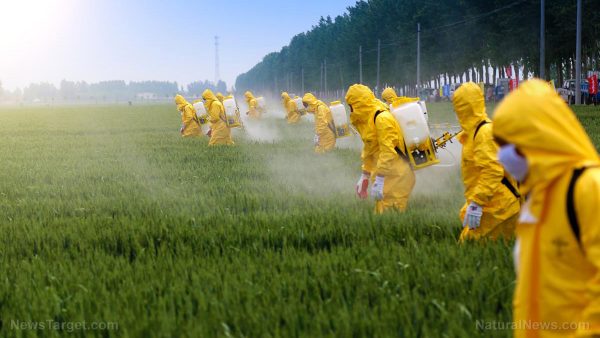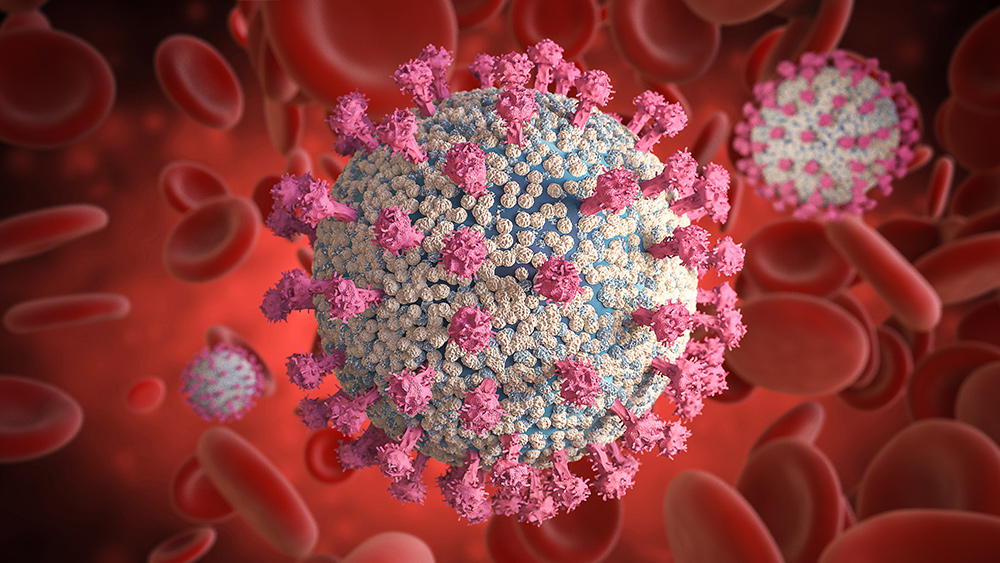 Parler
Parler Gab
Gab
- EPA moves to reapprove dicamba despite health risks: The EPA plans to reregister dicamba, a herbicide twice banned by federal courts due to its severe health and environmental risks. Dicamba is notorious for drifting long distances after application, exposing surrounding communities to potentially toxic levels.
- Widespread health effects of pesticide exposure: Agricultural chemicals, including dicamba, are increasingly found in air, food, water, and even human tissues. Long-term exposure is linked to cancer, hormone disruption, reproductive issues, and neurological disorders—especially harming children and pregnant women.
- Dicamba's unique danger – drift and accumulation: Unlike most herbicides, dicamba can remain airborne for up to 72 hours and travel miles, leading to spikes in ER visits for respiratory issues. It accumulates in the body over time, adding to a toxic burden with unknown long-term consequences.
- Regulatory capture and public pushback: The EPA’s decision is under scrutiny after appointing a former pesticide lobbyist to oversee regulation. However, public comments are open until August 22, 2025, giving citizens a chance to oppose the decision and advocate for stricter protections.
EPA moves to reapprove twice-banned herbicide despite health risks
Dicamba is part of a broader public health crisis tied to agricultural chemicals. Once viewed primarily as an occupational hazard for farmers, chemical exposure has now become a widespread threat. These substances are found in food, water, air, and even the human body. Numerous studies have documented higher rates of cancer—including lymphoma, leukemia, brain tumors, and prostate cancer—among agricultural workers. The International Agency for Research on Cancer (IARC) has labeled many common pesticides as probable human carcinogens. Children are particularly vulnerable. Pesticide exposure during pregnancy and early childhood has been linked to developmental disorders such as autism, ADHD, learning disabilities, and reduced IQ. Chemical exposure is also associated with miscarriages, birth defects, premature birth, and hormone disruption, which may contribute to rising infertility, early puberty, and metabolic disorders like diabetes. Dicamba’s unique danger lies in its volatility. Unlike most herbicides, dicamba easily vaporizes and drifts far from treated fields—sometimes for up to 72 hours. This means that entire neighborhoods can be exposed without warning. People living near treated fields often report respiratory problems, eye and skin irritation, and other health issues. Emergency rooms in high-use areas have seen spikes in breathing-related visits. Dicamba has caused the most widespread drift damage in U.S. agricultural history. Scientific studies link dicamba exposure to a range of health issues, including hormonal disruption, neurological symptoms like dizziness and headaches, and even liver cancer. A major concern is bioaccumulation: these chemicals build up in body fat, organs, and even the brain. Over time, low-level, chronic exposure adds to a toxic load with poorly understood long-term consequences. The reapproval process raises questions about regulatory integrity. Just before the EPA’s announcement, Kyle Kunkler—formerly a lobbyist for the American Soybean Association—was appointed to oversee pesticide regulation. Kunkler has a history of opposing restrictions on toxic chemicals like glyphosate and atrazine, further fueling concerns of industry influence over public health decisions. Public opposition remains a key check on regulatory overreach. The EPA is accepting public comments on the dicamba proposal until August 22, 2025. Submitting well-informed, health-focused feedback can influence final decisions. In the meantime, individuals can reduce personal exposure by choosing organic foods (especially those on the "Dirty Dozen" list), filtering drinking water, supporting liver detoxification with cruciferous vegetables, and maintaining healthy sleep and stress levels. The body has powerful mechanisms for detoxification, but it needs support in today’s chemical-laden environment. Staying informed, speaking out, and taking daily steps to minimize exposure are essential for long-term health. Tune your food news frequency to FoodSupply.news and get updates on more junk science food stuff loaded with toxic pesticides, herbicides and insecticides that corporate America loads the grocery store shelves with to drive up chronic diseases and disorders so Big Pharma can take your money. Sources for this article include: NaturalHealth365.com USRTK.org CommonDreams.orgBlood safety crisis: Vaccinated donors and the fight for choice under fire
By Willow Tohi // Share
“Natural Healing Encyclopedia” by Dr. Mark Stengler: A journey into holistic health
By Kevin Hughes // Share
By News Editors // Share
USDA, EPA greenlight RNA food tech amid calls for transparency
By Willow Tohi // Share
Trump brokers peace agreement between Armenia and Azerbaijan, ending decades of war
By Ramon Tomey // Share
Governments continue to obscure COVID-19 vaccine data amid rising concerns over excess deaths
By patricklewis // Share
Tech giant Microsoft backs EXTINCTION with its support of carbon capture programs
By ramontomeydw // Share
Germany to resume arms exports to Israel despite repeated ceasefire violations
By isabelle // Share










